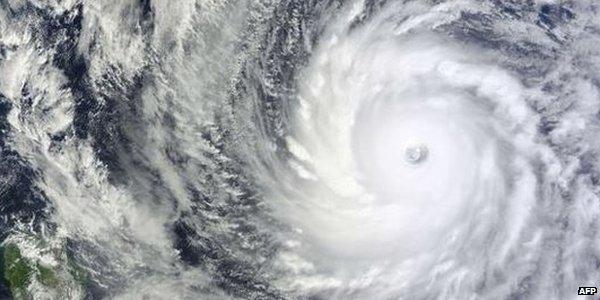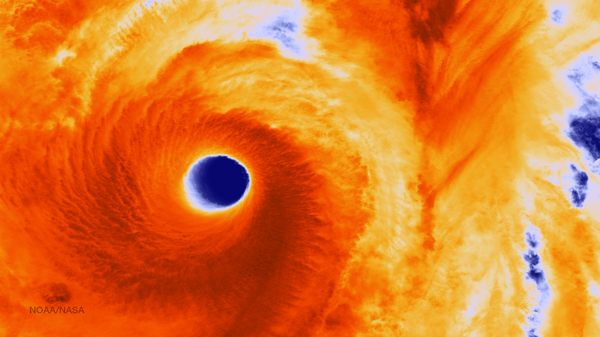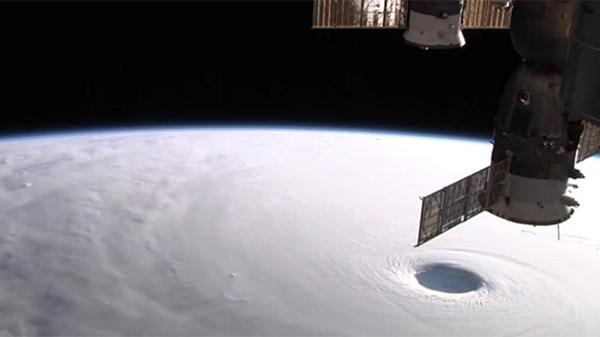Energy News....
http://www.voanews.com/content/typhoon-vongfong-leaves-2-dead-1-missing-japan/2482955.html
http://enenews.com/govt-issues-inundation-warning-fukushima-daiichi-years-strongest-storm-approaches-tepco-bracing-overflows-officials-warn-torrential-rains-landslides-ground-loosening-south-plant-danger-tornad
http://enenews.com/japan-times-records-shattered-fukushima-surging-radiation-levels-after-typhoon-tepco-doesnt-happening-warning-crisis-could-worse-180-kmhr-storm-heading-area
http://www.japantimes.co.jp/news/2014/10/12/national/tritium-surges-10-fold-in-groundwater-at-fukushima-nuclear-plant-typhoon-effect-suspected/#.VDqyddTF-I0
http://enenews.com/winds-110-mph-expected-fukushima-all-govt-forecasts-show-typhoon-passing-nuclear-plant-maps

http://www.accuweather.com/en/weather-news/typhoon-vongfong-to-strengthen/35196345


http://enenews.com/latest-govt-models-show-typhoon-making-direct-hit-fukushima-center-vongfong-expected-be-nuclear-plant-tuesday-maps

This U.S. Naval Research Laboratory satelllite image Wednesday shows Supertyphoon Vongfong in the Western Pacific Ocean. The most powerful storm of 2014 was swirling toward Japan. Its eye was around 600 miles (965 km) south-southeast of Kadena Air Base on Okinawa, moving west-northwest at about 8 mph (12.8 kmh). Its maximum sustained winds were estimated at 165 mph (265.5 kmh). | AFP-JIJI

http://www.voanews.com/content/typhoon-vongfong-leaves-2-dead-1-missing-japan/2482955.html
October 14, 2014 2:19 AM
Typhoon Vongfong has weakened and is heading away from Japan, after killing at least two people and leaving one other person missing.
Japan's Meteorological Agency said Vongfong still had winds of up to 110 kilometers per hour after being downgraded to a tropical depression.
The storm brought heavy rains to Tokyo early Tuesday, slowing the morning commute. By midday, most flights and commuter train service had resumed.
Vongfong peaked with winds of 234 kilometers per hour Saturday and damaged homes as it crossed over Japan's southern islands.
It injured at least 94 people and knocked out power for tens of thousands. Local media said authorities urged more than 800,000 people to evacuate.
Vongfong is the second typhoon to hit Japan in the past week, after Typhoon Phanfone killed seven people, including three U.S. servicemen.
http://enenews.com/govt-issues-inundation-warning-fukushima-daiichi-years-strongest-storm-approaches-tepco-bracing-overflows-officials-warn-torrential-rains-landslides-ground-loosening-south-plant-danger-tornad
Reuters, Oct. 13, 2014: The strongest storm to hit Japan this year battered the southern islands… early on Monday, brought heavy rain to Tokyo… [Tepco] said in a statement it had also increased the water transfer and storage capacity to prevent an overflow of radioactive water being stored at the [Fukushima] plant…

Yahoo News, Oct. 13, 2014: [The] Fukushima nuclear power plant is bracing itself for the arrival of powerful typhoon Vongfong [which] could reach the plant Tuesday, authorities said… employees would be patrolling the plant facilities at all times in order to prevent overflows or an increase in the contaminated water that accumulates in the basements, the company said… [Vongfong] was expected to arrive in Tokyo early Tuesday from where it would head northeast to the Fukushima plant. Authorities have issued warnings of torrential rains and landslides…
Accuweather, Oct. 13, 2014: Vongfong brought another round of torrential rainfall and locally damaging winds… Vongfong still threatens dangerous and life-threatening conditions to Honshu through Tuesday. Nearly 300 mm (12 inches) of rain fell in only 12 hours in Sumoto… (TEPCO) took precautions to prevent problems at the Fukushima Daiichi Nuclear Power Station… the storm will still bring life-threatening conditions areas in it’s path with the greatest impacts expected in Honshu… The combination of heavy rainfall from Vongfong with recent heavy rainfall from Phanfone will lead to a heighten risk for mudslides across Honshu…

The Japan Times, Oct. 13, 2014: The [JMA] said that eastern and northern Japan should expect more than 80 mm of rain fall per hour along the Pacific coast, where tornados, storm surges and violent waves would all pose dangers.
TEPCO, Oct. 13, 2014: Preparation for Typhoon No. 19 (Vongfong) at Fukushima Daiichi NPS — Installing rainwater guttering on tanks and shielding the dikes from heavy rain have been completed. Typhoon No. 19 (Vongfong) is expected to approach Kanto region and could affect Fukushima Daiichi NPS in next few days. To prepare for the typhoon, TEPCO has [prepared] to prevent overflow of the accumulated water… TEPCO will have workers to patrol the premises at all hours and confident that there will be no overflow…
TEPCO, Oct. 13, 2014: Very heavy winds are forecasted due to the typhoon, which could cause electric wires to be torn off and hung down.
http://enenews.com/japan-times-records-shattered-fukushima-surging-radiation-levels-after-typhoon-tepco-doesnt-happening-warning-crisis-could-worse-180-kmhr-storm-heading-area
Original Japan Times headline: Tritium surges tenfold in groundwater at Fukushima nuclear plant; typhoon effect suspected
Altered Japan Times headline: Tritium up tenfold in Fukushima groundwater after Typhoon Phanfone Tritium up tenfold in Fukushima groundwater after Typhoon Phanfone

Japan Times (Jiji Press), Oct. 12, 2014 (emphasis added): The radioactive water woes at [Fukushima] got worse over the weekend after the tritium concentration in a groundwater sample surged more than tenfold… [Tepco] said Saturday that heavy rain caused by Typhoon Phanfone probably affected the groundwater… [The] 150,000 becquerels… is a record for the well… [Beta ray emitters at the well] also shattered records with a reading of 1.2 million becquerels… close to the plant’s port in the Pacific… [Another well had] a record 2.1 million becquerels of a beta ray-emitting substance, nearly double the level from a week earlier… The cesium activity in the sample was 70 percent higher at 68,000 becquerels… Readings hit record highs at three points after the heavy rain caused by the typhoon, but the utility said it does not know why.
Perhaps it has something to do with this report just after the typhoon hit last weekend: Officials: Typhoon triggers alarm at Fukushima plant -- Warning of leakage at Reactor No. 1 turbine building -- Leak then detected at Reactor No. 3 -- Camera captures images of water pouring in after "very heavy rain" -- Powerful storm still packing gusts of up to 180 km/hr off Fukushima coast
Japan Times (Jiji Press), Oct. 12, 2014: The water crisis could get worse… Typhoon Vongfong… was still packing winds of up to 180 kph… The Meteorological Agency said it [would be] gradually losing strength as it races north toward Tohoku [which includes Fukushima.]
In fact, officials at the Japan Meteorological Agency forecast Vongfong’s wind speed to lose just 5-6 mph from it’s current level by the time it reaches Fukushima prefecture. See: Typhoon winds up to 110 mph to hit Fukushima Daiichi, storm surge advisory issued -- Nearly all gov't forecasts show eye passing right over plant -- Nuclear Expert: Expect radioactive material washing into Pacific Ocean (MAPS)
Although not mentioned in the Japan Times’ report, a spike in Cobalt-60 was also seen after Typhoon Phanfone. The Co-60 concentration more than doubled the record high for any well since Tepco began publishing results. See: Officials: Typhoon caused significant increase in radioactive releases from Fukushima -- Record levels of 'highly toxic' nuclear material found in ground outside reactor -- Among the most poisonous substances at plant
Giant atmospheric vortex: #Vongfong Typhoon from the Earth’s orbit (VIDEO, PHOTOS) http://on.rt.com/4dj8ko
http://www.japantimes.co.jp/news/2014/10/12/national/tritium-surges-10-fold-in-groundwater-at-fukushima-nuclear-plant-typhoon-effect-suspected/#.VDqyddTF-I0
Tritium up tenfold in Fukushima groundwater after Typhoon Phanfone
Fukushima No. 1’s radioactive water woes worsen after the tritium concentration in a groundwater sample was found to have surged more than tenfold.
http://enenews.com/winds-110-mph-expected-fukushima-all-govt-forecasts-show-typhoon-passing-nuclear-plant-maps
Forecast tracks show the center of Typhoon Vongfong over Fukushima Daiichi on Tuesday morning Oct. 14 (Japan, U.S., Hong Kong, China, Taiwan, and ensemble), Oct. 12, 2014:


DW, Oct. 10, 2014: Is Fukushima capable of withstanding a super typhoon?… Vongfong is expected… just days after [Japan] was struck by another typhoon… Alongside strong winds and heavy rain capable of causing landslides and flash floods, such super storms can also trigger an abnormal rise of water called a storm surge… Of particular concern in Japan is the area around the crippled Fukushima Daiichi… is the plant also braced for the impact of a super typhoon?
Michael Maqua, nuclear expert: “Expect radioactive isotopes from contaminated surfaces… transported into the groundwater or the sea… The main risk of the typhoon is the intrusion of rain water into the buildings – mainly [at] reactor 3… rain water will [likely] mix with the contaminated water in the basements of the reactor buildings and thus more radioactivity could be washed to the sea.”
Typhoon Vongfong set to be the strongest storm to hit Japan this year
http://bbc.in/1rnDlYk

http://www.accuweather.com/en/weather-news/typhoon-vongfong-to-strengthen/35196345
While Japan is recovering from formerTyphoon Phanfone, another powerful typhoon looms in the distance.
Typhoon Vongfong, meaning "the wasp" in Cantonese, is currently churning in the western Pacific, just east of Taiwan, with an expected path heading through the Ryukyu Islands and mainland Japan.
This dangerous typhoon has already recorded a brutal history. Vongfong brought flooding rainfall and damaging wind to the northern Mariana Islands on Sunday, local time. Wind gusts over 89 kph (55 mph) and rainfall over 75 millimeters (3 inches) were common.
****
Some weakening has brought the strength of Vongfong down to the equivalent of a Category 3 hurricane with sustained winds of 185 kph (115 mph). However, Vongfong still threatens dangerous and life-threatening conditions.
Since taking a more northerly path, Vongfong has slowed down. While some uncertainty still remains in the exact path of the powerful typhoon, confidence is becoming increasingly high that the powerful cyclone will track very close or over Okinawa Saturday night, local time, before making landfall in mainland Japan by early next week.

****
The first target will be the northern Ryukyu Islands which began to feel the effects of Vongfong Friday night. Wind gusts have topped 174 kph (108 mph) at Miyagijma in Okinawa and the worst of the storm is yet to come.
"As Vongfong approaches Okinawa and Kadena Air Force Base during the day Saturday, it will lash the island with increasing winds and torrential rainfall," said AccuWeather.com Meteorologist Ed Vallee.
Power outages have already occurred while flash flooding is also a major concern. Wind gusts over 160 kph (100 mph) are expected across the island.

After battering the Ryukyu Islands, the focus will then shift to mainland Japan. The worst impacts across mainland Japan are expected from late Sunday through Tuesday as typhoon-force winds and inundating rainfall spread from southwest to northeast across the nation.
****
Many areas at risk from Vongfong are still recovering from more than 150 millimeters (6 inches) of rain and strong winds that hammered eastern Japan from Sunday into Monday as Typhoon Phanfone moved through the region.
Tokyo was deluged by 272 millimeters (10.71 inches) of rain ahead of and during the height of Phanfone.
"Phanfone was a huge rainstorm for Tokyo, one of the biggest I can remember," Andrews added, noting moisture from the storm interacted with a stalled front, prolonging the duration of rain.
There could be another round of flooding rainfall in Tokyo, almost exactly one week after Phanfone's impact.
"The threats are the same as they were with Phanfone," Andrews said. "There are some likenesses but also some differences in Phanfone's track. The results can vary markedly with small differences in track and storm speed."
All interests in Japan should continue to monitor this powerful typhoon.
http://enenews.com/latest-govt-models-show-typhoon-making-direct-hit-fukushima-center-vongfong-expected-be-nuclear-plant-tuesday-maps
http://www.japantimes.co.jp/news/2014/10/09/national/vongfong-supertyphoon-rivaling-haiyan-roaring-toward-japan/#.VDe-PtTF-I0
A supertyphoon on course to hit Japan over the weekend is as powerful as the deadly storm that ripped through the Philippines in 2013 killing thousands of people, meteorologists said Wednesday
The monstrous storm, named Vongfong, was picking up speed as it churned through the far west of the Pacific Ocean.
“Its strength is very much similar to Haiyan,” which ravaged the Philippines in November, said a meteorologist at the Meteorological Agency.
Haiyan left nearly 8,000 people dead or missing when gusts of around 300 kph (190 mph) tore through the country, generating giant waves that swamped coastal communities.
Vongfong was registering gusts of the same strength, according to the Japanese agency.
Satellite images of Supertyphoon Vongfong show a perfectly formed eye in the middle of a gigantic swirling disc of cloud that appears to be sucking up weather systems from across the Tropics.
Its present course will see it smash into Japan some time over the weekend, just days after another typhoon whipped through the country, leaving 11 people dead or missing and causing travel chaos.
Vongfong is expected to continue strengthening over the next 24 hours but could lose some steam as it heads north.
“Normally, typhoons are strongest when they are in the Tropics. They start to gradually weaken as they move into the subtropical region and the temperate zone,” the meteorologist said.

Weather Underground.....
Typhoon Vongfong
| Last Updated | 10/10/2014, 2:00:00 AM (EDT) | ||
| Location | 22.3N 230.7E | Movement | N at 9 mph |
| Wind | 140 MPH | ||
Other Storm Information
Learn more about Typhoon Vongfong and the 2014 Western Pacific hurricane season here.
Coordinates
|
Discussions
|
Public Advisory
Note the impact from prior Typhoon Phanfone ....
http://enenews.com/officials-typhoon-caused-significant-increase-radioactive-releases-fukushima-record-levels-highly-toxic-nuclear-material-found-ground-reactor-among-poisonous-substances-plant
Radiological Fact Sheet; [It's] possible to dissolve Co-60… making it a potential inhalation or ingestion hazard… Inhaled Co-60 contamination can give high radiation dose to lungs… Ingested insoluble Co-60 can give high radiation dose to the intestinal tract, while soluble Co-60 distributes fairly evenly through the body… “hot” particles can give very high dose locally, in area of particle… 45% of Co-60 that enters the blood is evenly distributed through the body…
Ingested insoluble Co-60 can give high radiation dose to the intestinal tract, while soluble Co-60 distributes fairly evenly through the body… “hot” particles can give very high dose locally, in area of particle… 45% of Co-60 that enters the blood is evenly distributed through the body…
 Ingested insoluble Co-60 can give high radiation dose to the intestinal tract, while soluble Co-60 distributes fairly evenly through the body… “hot” particles can give very high dose locally, in area of particle… 45% of Co-60 that enters the blood is evenly distributed through the body…
Ingested insoluble Co-60 can give high radiation dose to the intestinal tract, while soluble Co-60 distributes fairly evenly through the body… “hot” particles can give very high dose locally, in area of particle… 45% of Co-60 that enters the blood is evenly distributed through the body…
Michael Maqua, nuclear expert and head of plant engineering at GRS, Oct. 10, 2014: Over the past days, the concentration of radioactive substances in the groundwater has increased significantly at some of the plant’s measuring points and, according to TEPCO, this was caused by the recent heavy rains… Contaminated water… is in fact constantly reaching sea water… caused, for example, by leakages in building structures










No comments:
Post a Comment